

Pedestrian bridges spanning waterways and rivers are common infrastructures used in many places such as parks, universities, and recreational areas. Due to their unique design, it is often difficult to inspect them visually, which could result in unnoticed damage and pose a threat to bridge users. Traditional inspection methods such as rope access or scaffolding are time-consuming, costly, and pose a risk to workers' safety. In this case study, we will explore our use of drones to inspect a complex steel pedestrian bridge in Ireland.
The bridge in question is a 350-meter long footbridge consisting of six cable-truss spans. These Supported by a pair of under-slung catenary cables with tetrapod piers between each span. The majority of the bridge is made from painted steel. The bridge is located in Limerick University. It was constructed in 2007, and while it is regularly inspected, the intricate design of the bridge makes it difficult to inspect thoroughly.
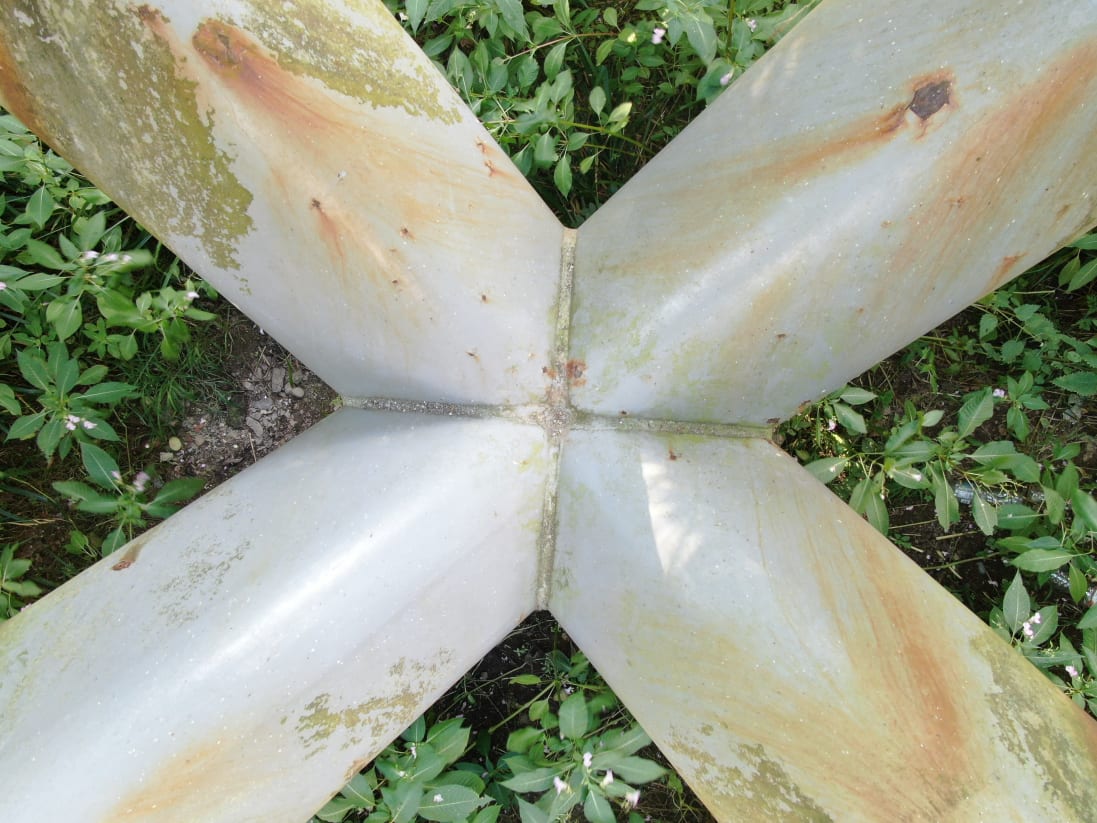
The University management along with their sun-contractor contracted Engineers With Drones to carry out the inspection of the bridge. The drone used for the inspection was equipped with a high-definition camera, allowing for detailed imaging of the bridge's various components.
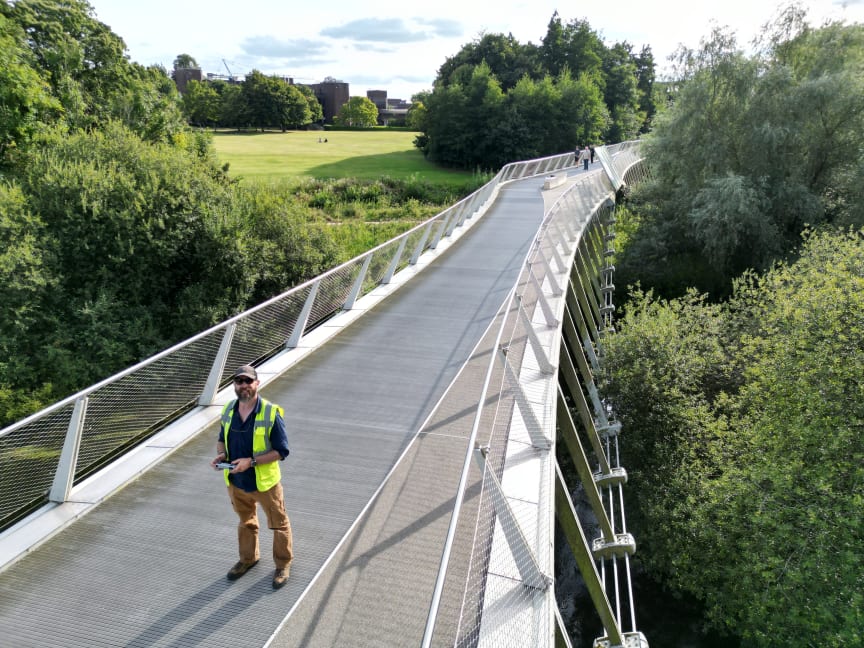
The choice of drone was very important on this project as the bridge was not only located in a heavily trafficked pubic space but also a special area of conservation with nesting birds in the surrounding areas. These conditions meant that large loud drones were immediately excluded from the list. In the end we chose to use a combination of the 249 gram DJI Mini 3 Pro and the Mavic 3 Enterprise. Both of which are small, light and low noise modern drones.
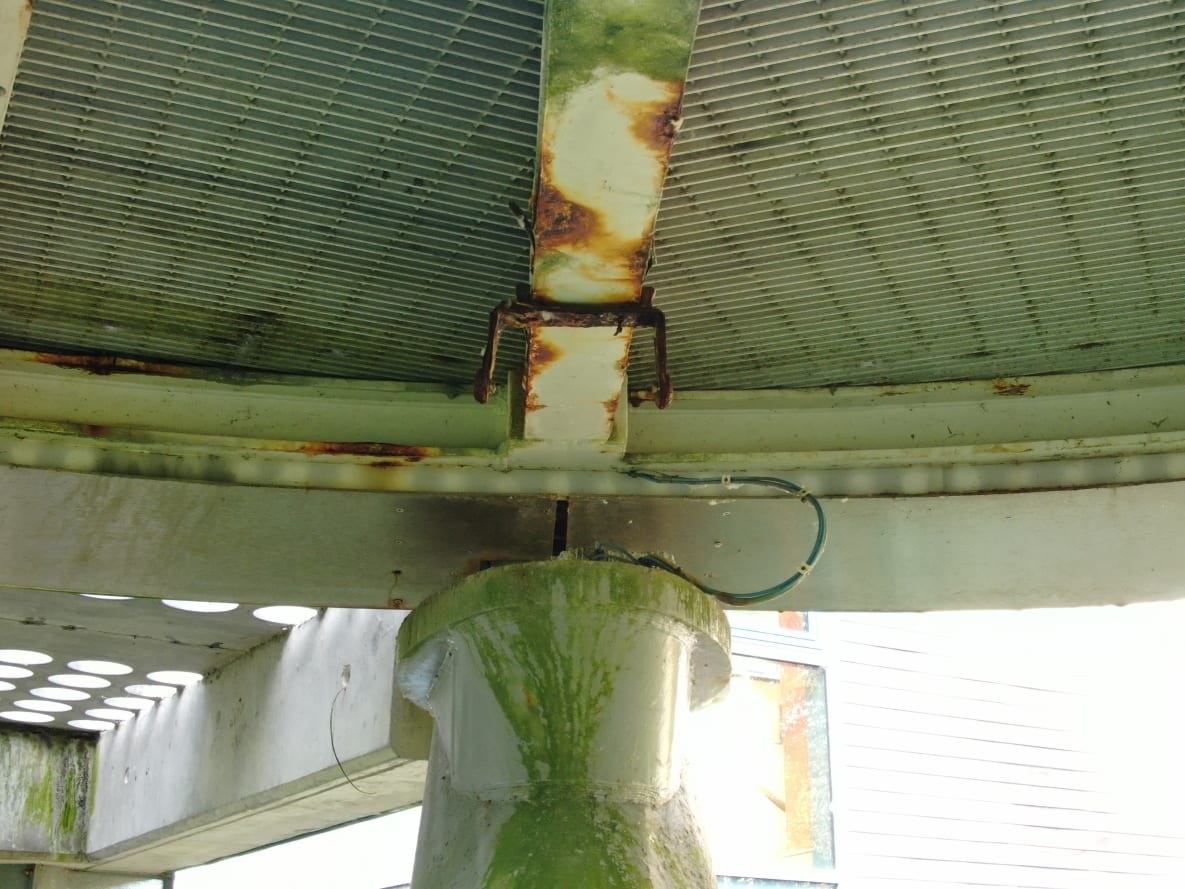
The drone was flown around the bridge at various altitudes and angles to capture the images required for the inspection. The drone pilot was able to control the drone's movements remotely, allowing them to capture images of even the most difficult to reach areas of the bridge, including the underside of the bridge. The pilot moved to various operating locations in order to ensure the best angle to view the drone.
The primary target of the inspection was everything that was not visible while walking across the bridge. This means the piers, soffit cable trusses and cable arms and shoes. Also included were the cable termination points and the span bearings.
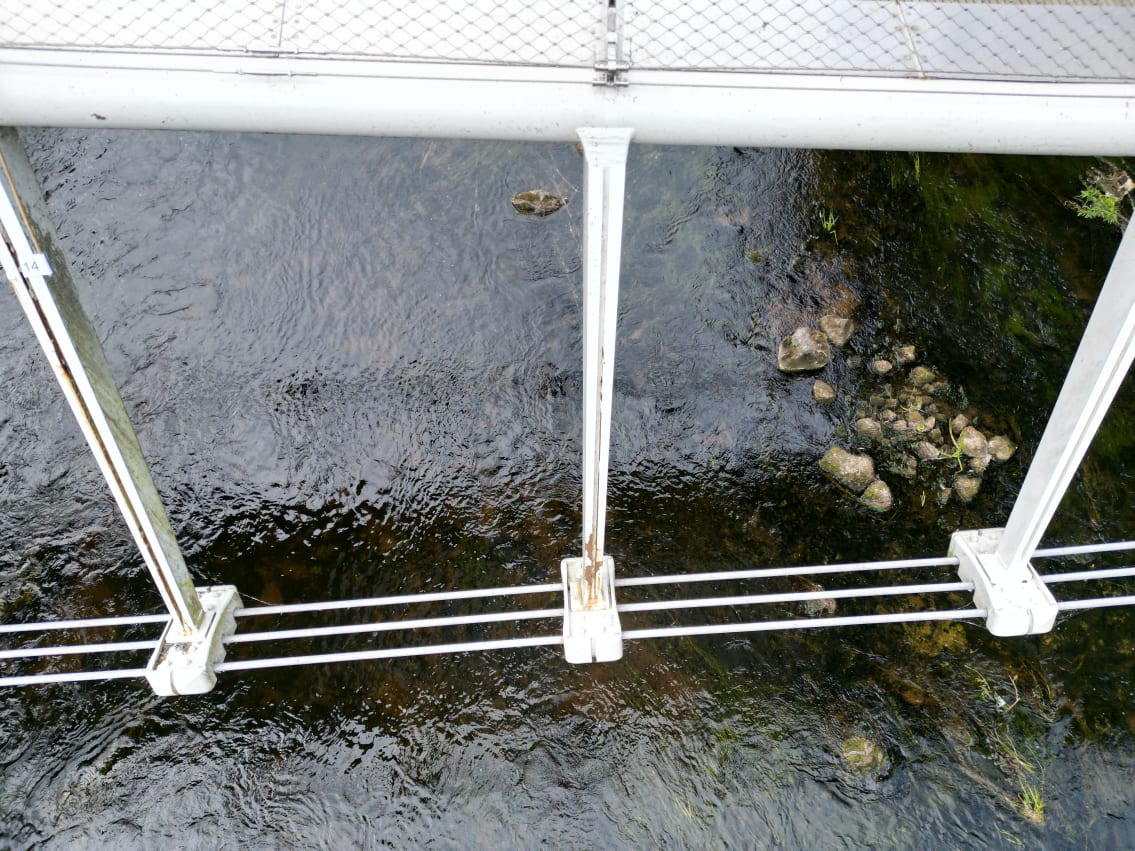
A draft image capture plan was generated by Engineers With Drones. This was then relayed to the client to assess if it suitable for their needs. Final adjustments were made and the plan was locked in. Engineers WIth Drones were also tasked with getting extra e=imagery of any possible defect they considered warranted further investigation.
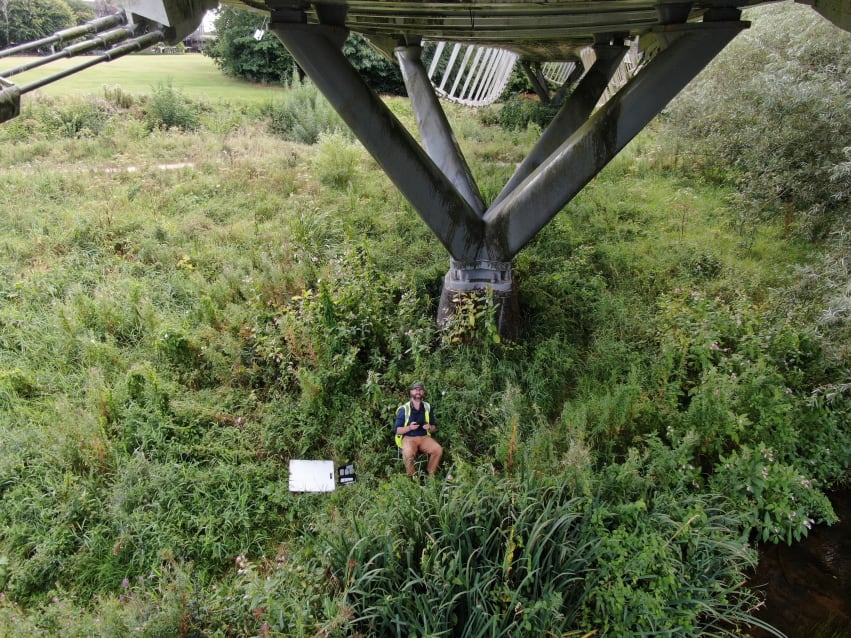
Data capture took two days in the field. This was conducted during the summer months when there was a much reduced population at the university. Flights above the parapet of the bridge were conducted early morning when there was less chance of person using the bridge.
Once field work was complete the images were sorted, processed and relayed to the client for analysis. The engineers were able to review the images in detail and identify any areas of the bridge that required attention. The detailed images captured by the drone allowed the client to identify cracks, rust spots, and other areas of potential damage that would have been difficult to detect using traditional inspection methods.
The use of a drone for the inspection of the steel lattice pedestrian bridge was not only more efficient but also safer. By using a drone, the need for workers to climb the bridge to inspect it was eliminated, reducing the risk of falls and other accidents.
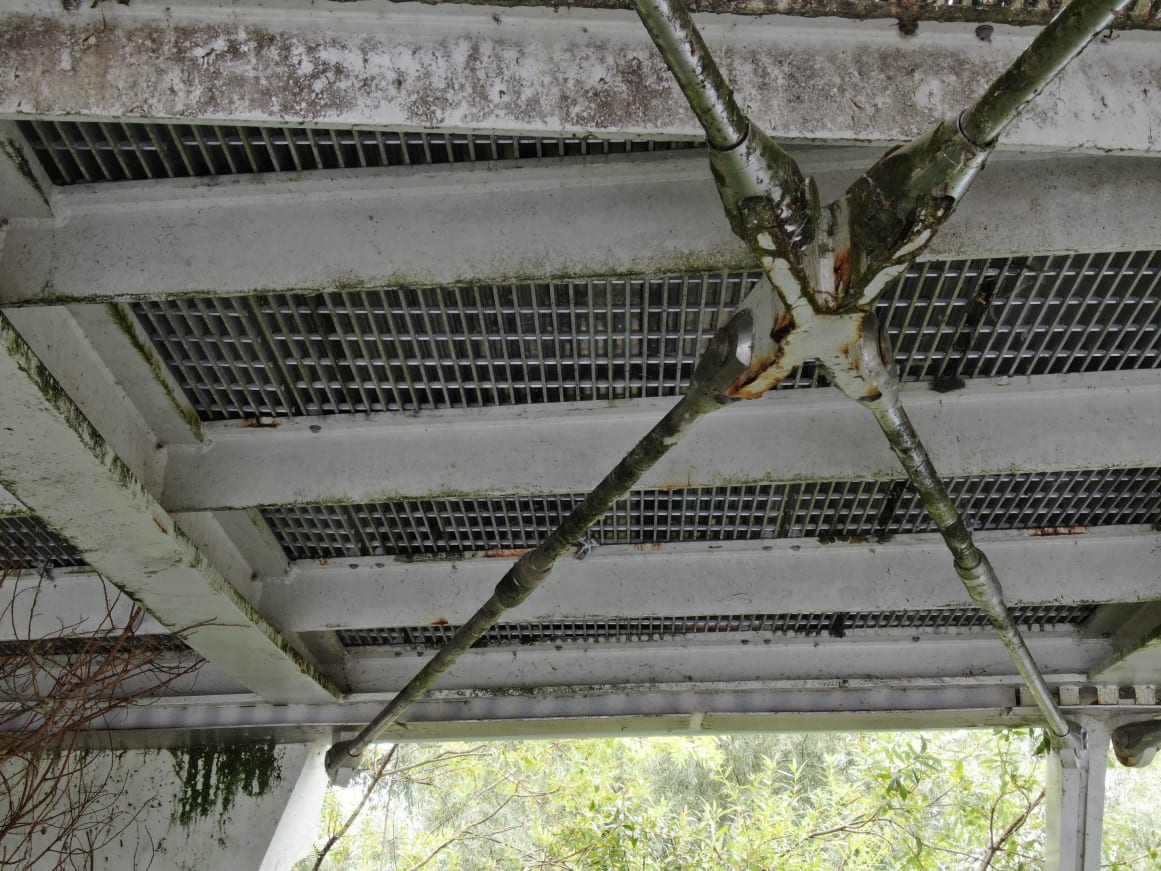
The use of drones for the inspection of complex steel lattice pedestrian bridges is a game-changer for the bridge inspection industry. Drones provide a more efficient, accurate, and safer way of inspecting these structures, ultimately resulting in a safer environment for the public. As technology advances, we can expect drones to become an even more integral part of the bridge inspection process, providing a cost-effective and reliable way of maintaining these crucial infrastructure assets.
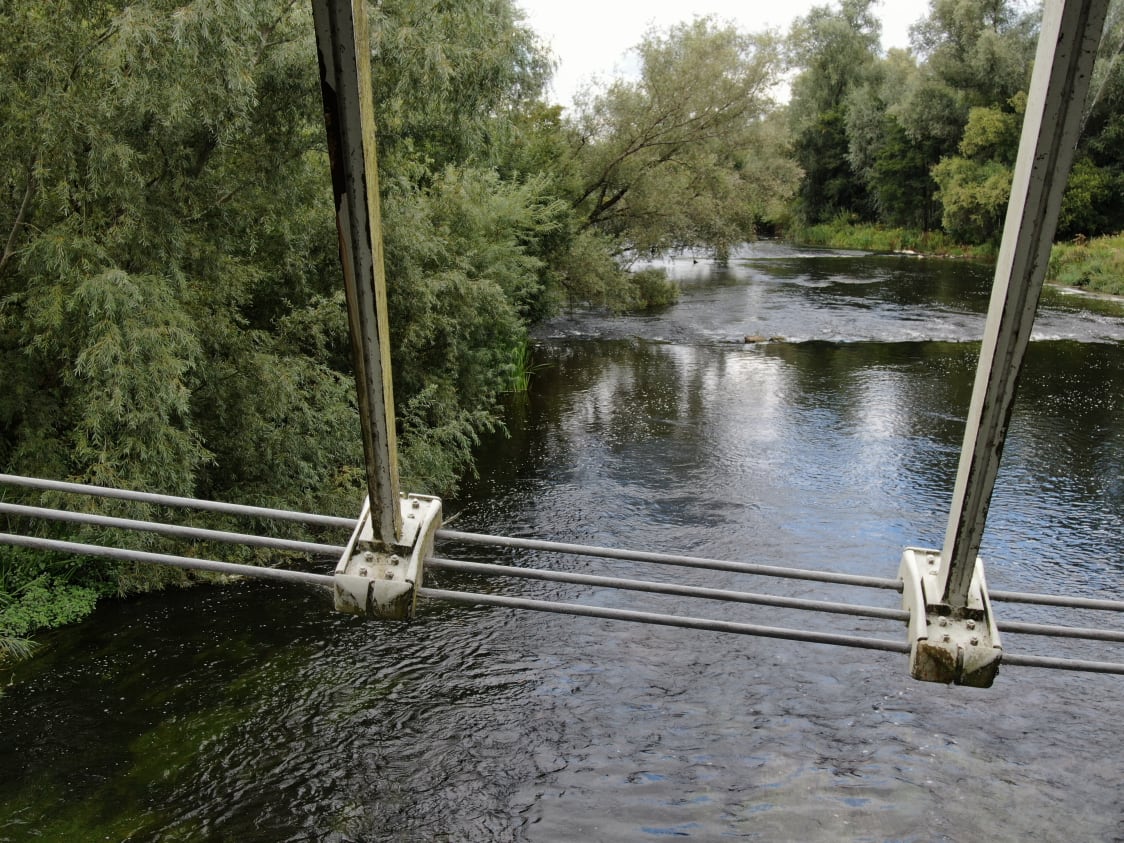
This eliminated the need for scaffolding, platforms and personnel working at height. It also meant that personnel did not have to work above the water. The fact that all this equipment was no longer required also meant that the road could remain open during the inspection.
You can find out more about our bridge inspection capabilities here. Alternatively you can contact us here.
Last Updated: 04 July 2023